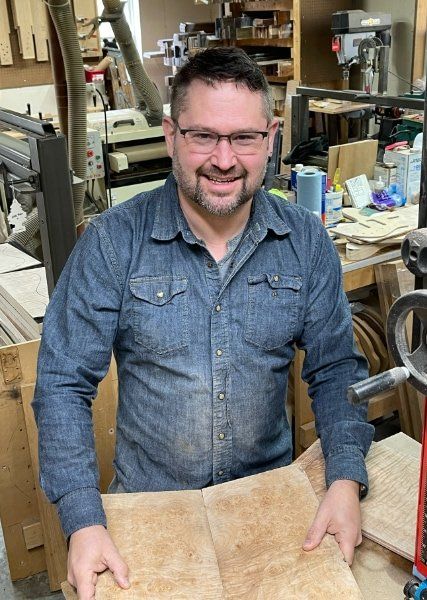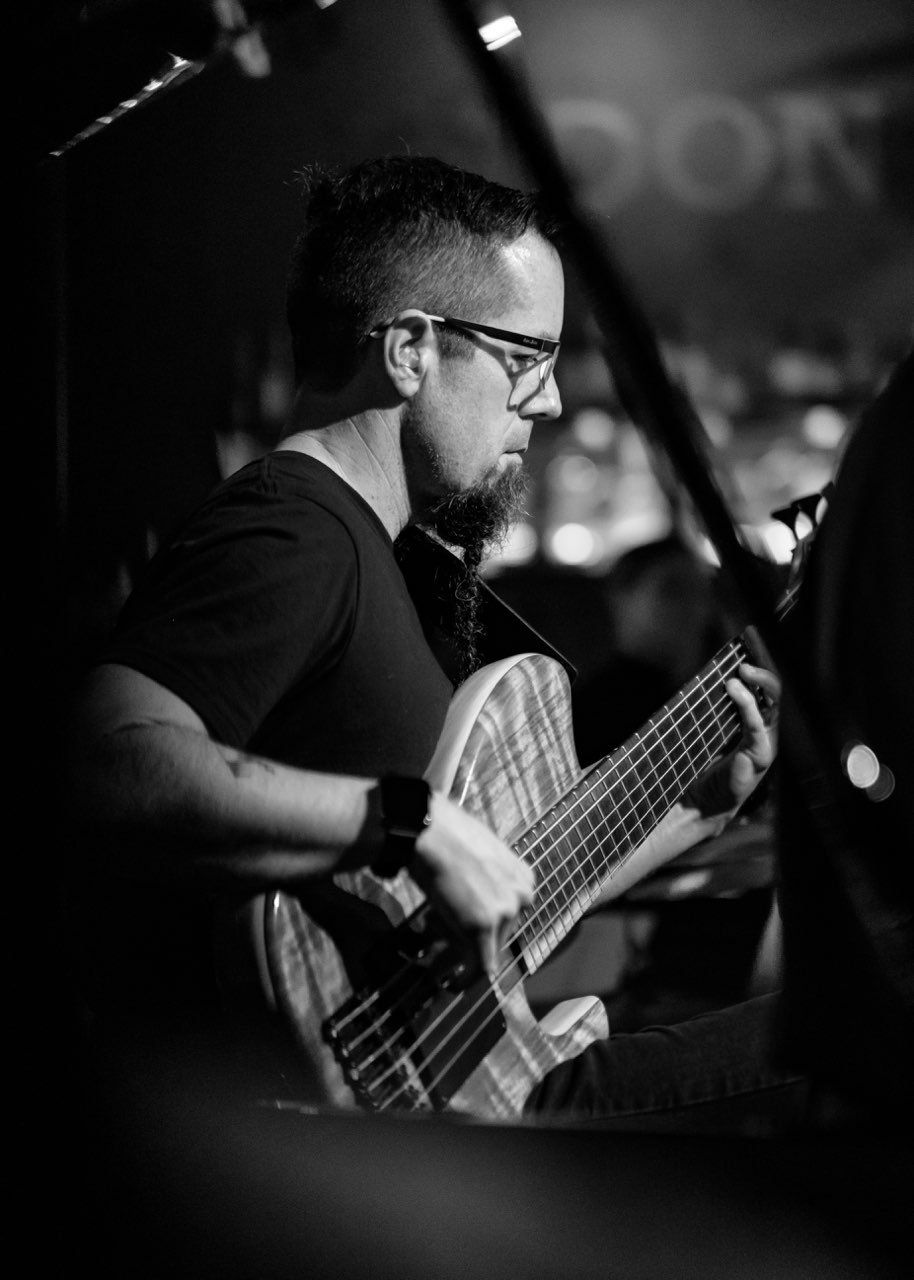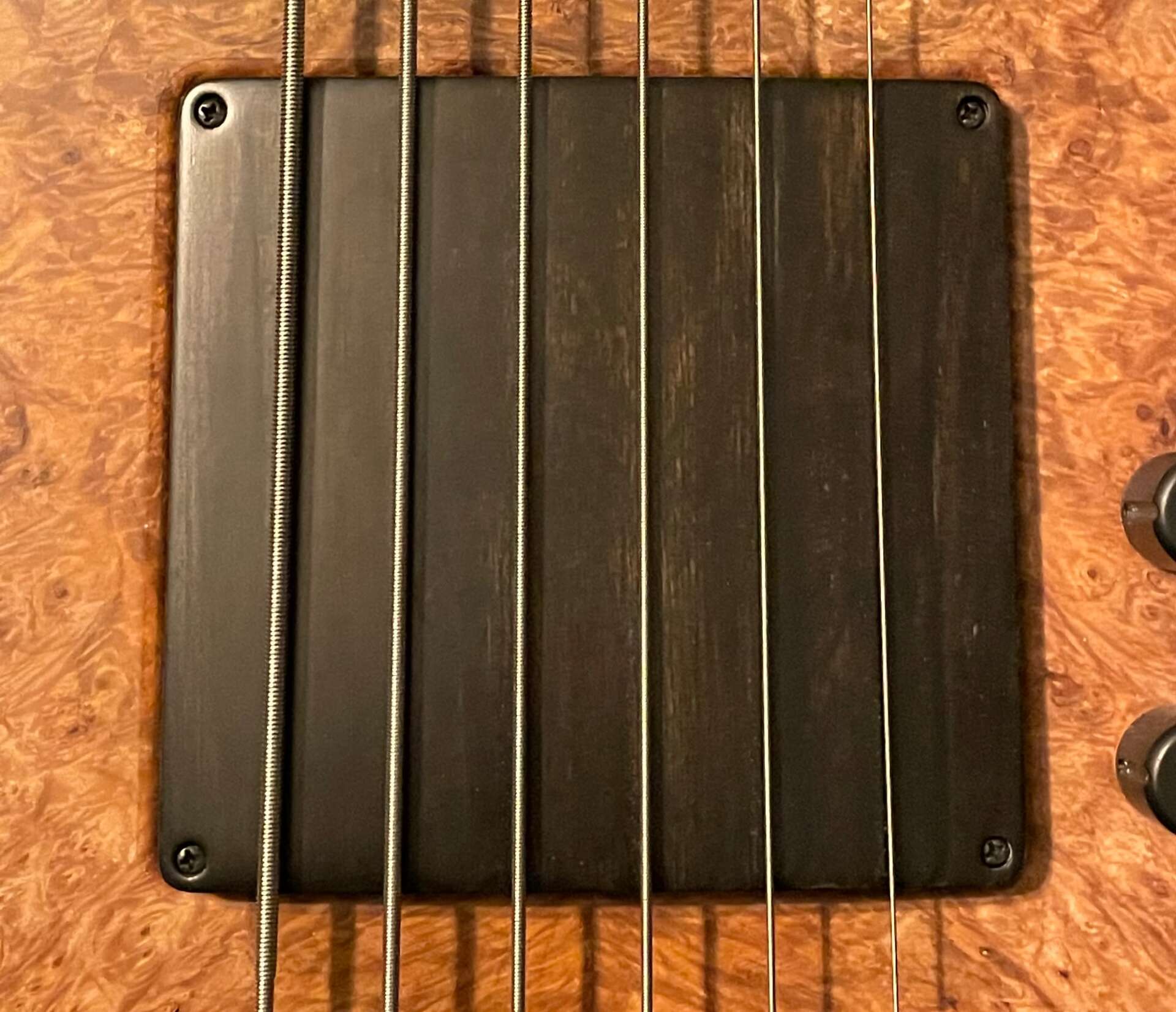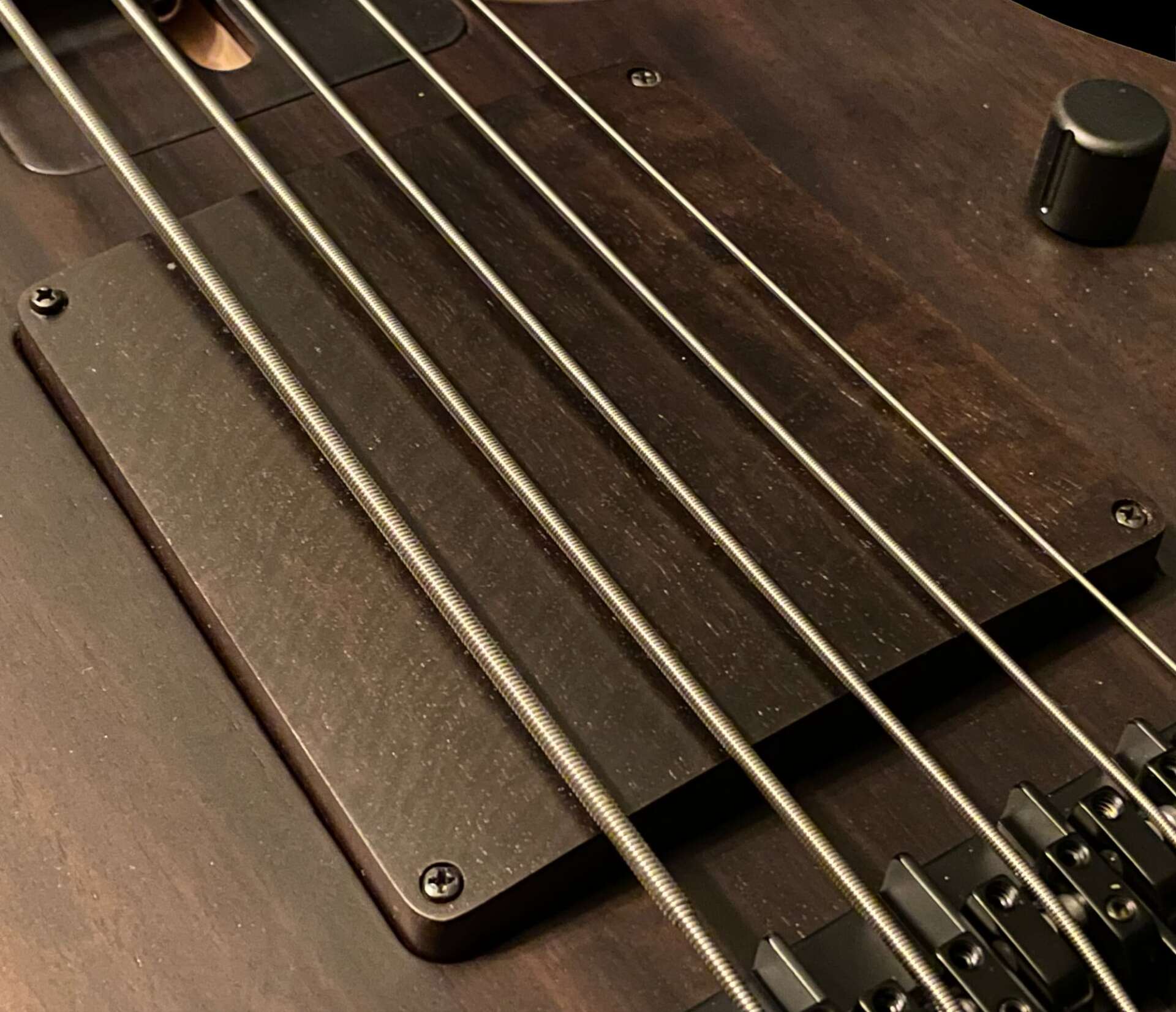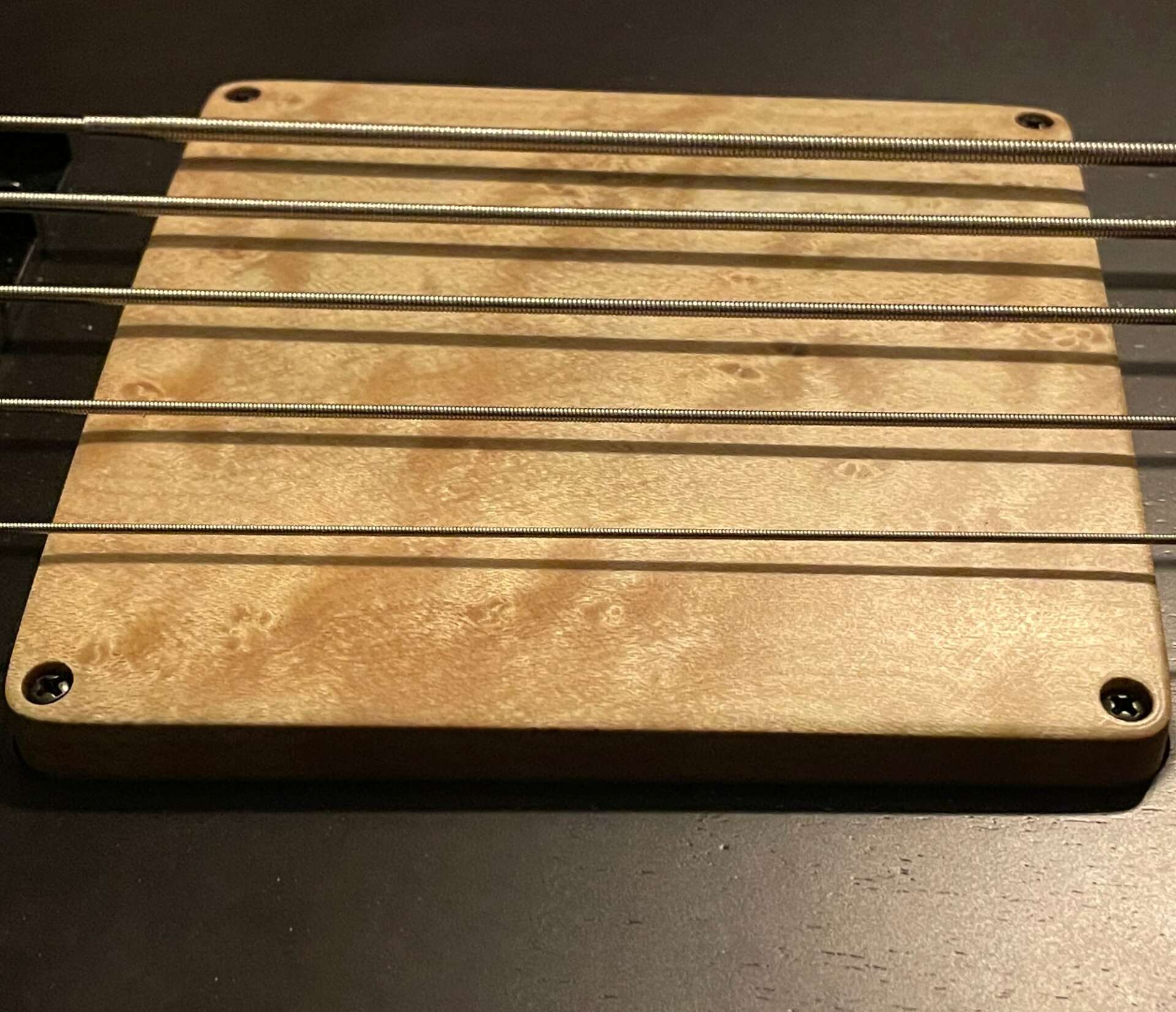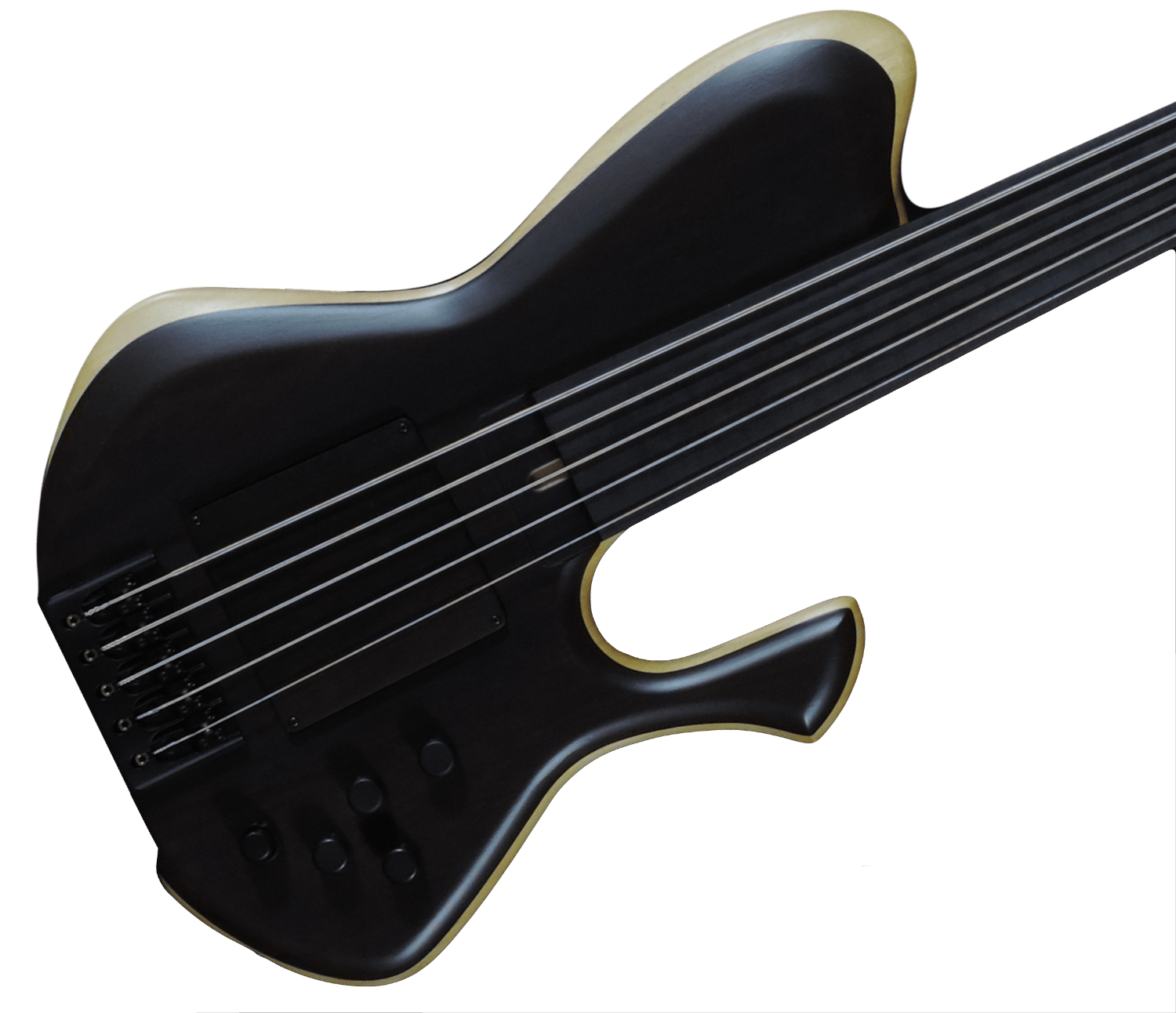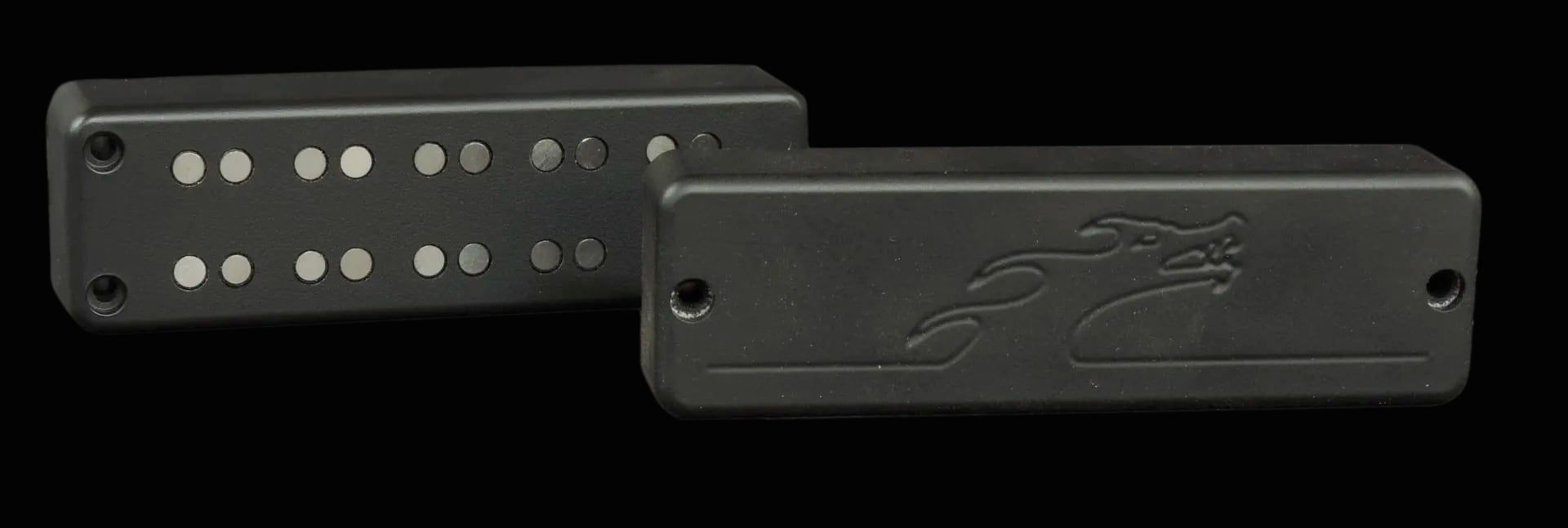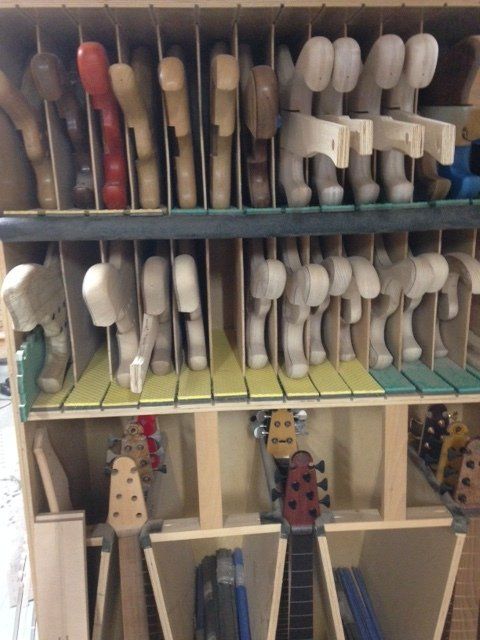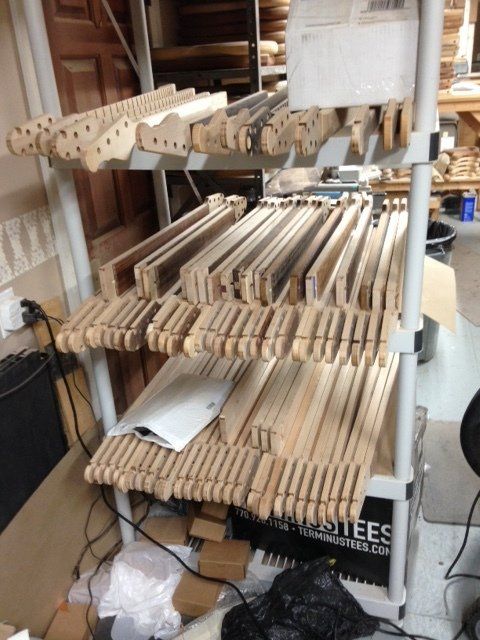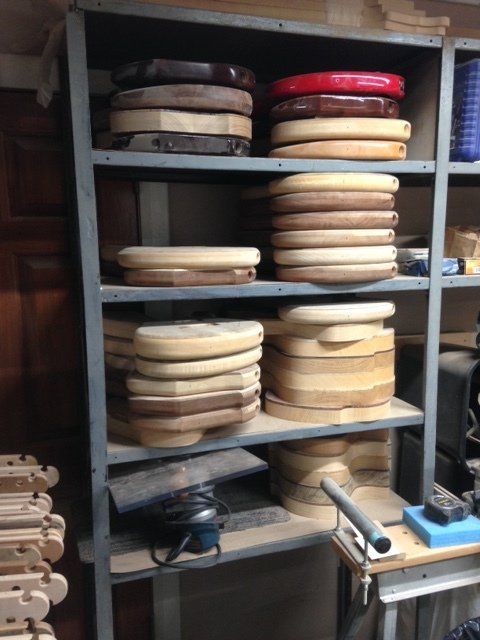Hello, my name is Pete Skjold of Skjold Design Guitars LLC. I want to thank you for visiting my site. If you are here for the first time I would like to take this opportunity to introduce Skjold Design Guitars and explain my processes, philosophies and goals when producing these handmade instruments for discerning players. First I think you need to know that I am Skjold Design Guitars, meaning that this is not a factory with several employees doing various jobs in the shop. I am the person who handles every aspect of the work done here in my shop/studio. Artisan/Luthier Pete Skjold is synonymous with Skjold Design Guitars.
Part of the handmade process involves materials entering my shop in the rough form. All the wood must first be stabilized, dimensioned, and processed into useable pieces of lumber for specific purposes. This provides greater control over the quality of the wood which is paramount when making the finest handmade basses possible. This has been achieved over decades. Every aspect of the process is done by hand. There are no computer aided machines here in the shop. I choose to execute everything this way because that is how I relate to the instrument, as a player and builder. It's feel, it's vibration, it's exacting tolerances, everything has to pass through my filters (i.e. my hands) in becoming a truly fine instrument worthy of your expression. Does this take longer? Yes, but I feel it is worth it. Here is why I believe you will feel the same. First, everything is indexed with exact tolerances making my bass guitars very similar and consistent from one to another. Some other handmade basses can vary quite a lot from bass to bass making it hard to know the same person was responsible for building both instruments. With Skjold Design Guitars this is not the case. Much effort is put into critical points such as the neck profile, weight, fingerboard radius, playability and response. All are done to a very high Skjold standard to ensure the familiar aspects you will come to appreciate and love about your Skjold bass guitar. Although unique and distinctive, many of my customers express how comfortable they are with the bass as soon as they take it out of the box. Many have received their bass just hours before a performance and were able to take the bass directly to the gig after just a short time with it. Customers report that after they receive a Skjold bass it quickly becomes their go to bass.
You can't talk about building basses of this level without talking about experience, not only building experience but also real world playing experience. I have been building complete instruments since 1997 and have been a professional bassist since 1990. This playing experience is so critical to what I do. It gives me the inside perspective of what my players are looking for in a bass guitar and what their goals are. In 2003, I went full time into building bass guitars exclusively. All of my designs stem from a bass I designed in 1992. From there I have continually refined my designs and goals as a builder. Nothing has been done without purpose or reason. I always favor elegant simplicity over needless complexity. This all becomes evident when you play a Skjold bass guitar for the first time.


